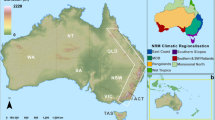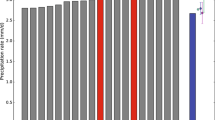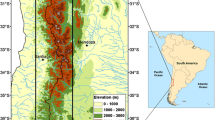Abstract
Two ten-year simulations made with a European regional climate model (RCM) are compared. They are driven by the same observed sea surface temperatures but use different lateral boundary forcing. For one simulation, RCM AMIP, this forcing is obtained from a standard integration of a global general circulation model (GCM AMIP), whereas for the other simulation, RCM ASSIM, it is derived from a time series of operational analyses. The archive of analysis fields (surface pressure plus winds and temperatures on various pressure levels) is not sufficiently comprehensive to provide directly the full set of driving fields required for the RCM (in particular, no moisture fields are present), so these are obtained via a GCM integration, GCM ASSIM, in which the model is continuously relaxed towards the analysis fields using a data assimilation technique. Errors in RCM AMIP can arise either from the internal RCM physics or from errors in the lateral boundary forcing inherited from GCM AMIP. Errors in RCM ASSIM can arise from the internal RCM physics or the boundary moisture forcing but not from the driving circulation. Although previous studies have considered RCM integrations driven either by output from standard GCM integrations or operational analyses, our study is the first to compare parallel integrations of each type. This allows the total systematic error in an RCM integration driven by standard GCM output to be partitioned into components arising from the driving circulation and the internal RCM physics. These components indicate the scope for reducing regional simulation biases by improving either the driving GCM or the RCM itself. The results relate mainly to elements of surface climate likely to be influenced by both the driving circulation and regional physical processes operating in the RCM. For cloud cover, errors are found to arise largely from the internal RCM physics. Values are too low despite a positive relative humidity bias, indicating shortcomings in the parametrisation scheme used to calculate cloud cover. In summer, surface temperature and precipitation errors are also explained principally by regional processes. For example excessive solar heating leads to anomalously high surface temperatures over southern Europe and excessive drying of the soil reduces precipitation in the south eastern sector of the domain. The lateral boundary forcing reduces precipitation in the south eastern sector of the domain. The lateral boundary forcing also exerts some influence, mainly via a tropospheric cold bias which partially offsets the warming over southern Europe and also increases precipitation. In other seasons the lateral boundary forcing and the regional physics both contribute significantly to the errors in surface temperature and precipitation. In winter the boundary forcing (apart from moisture) is responsible for about 60% of the total error variance for temperature and about 40% for precipitation, due to the cold bias and circulation errors such as a southward shift in the storm track. The remaining errors arise from the regional physics, although for precipitation an excessive supply of moisture from the lateral boundaries also contributes. The skill of the mesoscale component of the surface temperature and precipitation distributions exceeds previous estimates, due to more realistic observed climatology. The mesoscale patterns are very similar in the two RCM simulations indicating that errors in the simulation of fine scale detail arise mainly from inadequate representations of local forcings rather than errors in the large-scale circulation. Circulation errors in RCM AMIP (e.g. cold bias, southward shift of storm track) are also present in GCM AMIP, but are largely absent in RCM ASSIM except in summer. This confirms evidence from previous work that the key to reducing most circulation errors in the RCM lies in improving the driving GCM. Regional processes only make a major contribution to circulation errors in summer, when reduced advection from the boundaries allows errors in surface temperature to be transmitted more effectively into the troposphere. Finally, we find evidence of error balances in the GCM which act to minimise biases in important climatological variables. This reflects tuning of the model physics at GCM resolution. In order to achieve simultaneous optimisation of the RCM and GCM at widely differing resolutions it may be necessary to introduce explicit scale dependences into some aspects of the physics.
Similar content being viewed by others
Author information
Authors and Affiliations
Additional information
Received: 17 September 1997/Accepted: 10 March 1998
Rights and permissions
About this article
Cite this article
Noguer, M., Jones, R. & Murphy, J. Sources of systematic errors in the climatology of a regional climate model over Europe. Climate Dynamics 14, 691–712 (1998). https://doi.org/10.1007/s003820050249
Issue Date:
DOI: https://doi.org/10.1007/s003820050249




